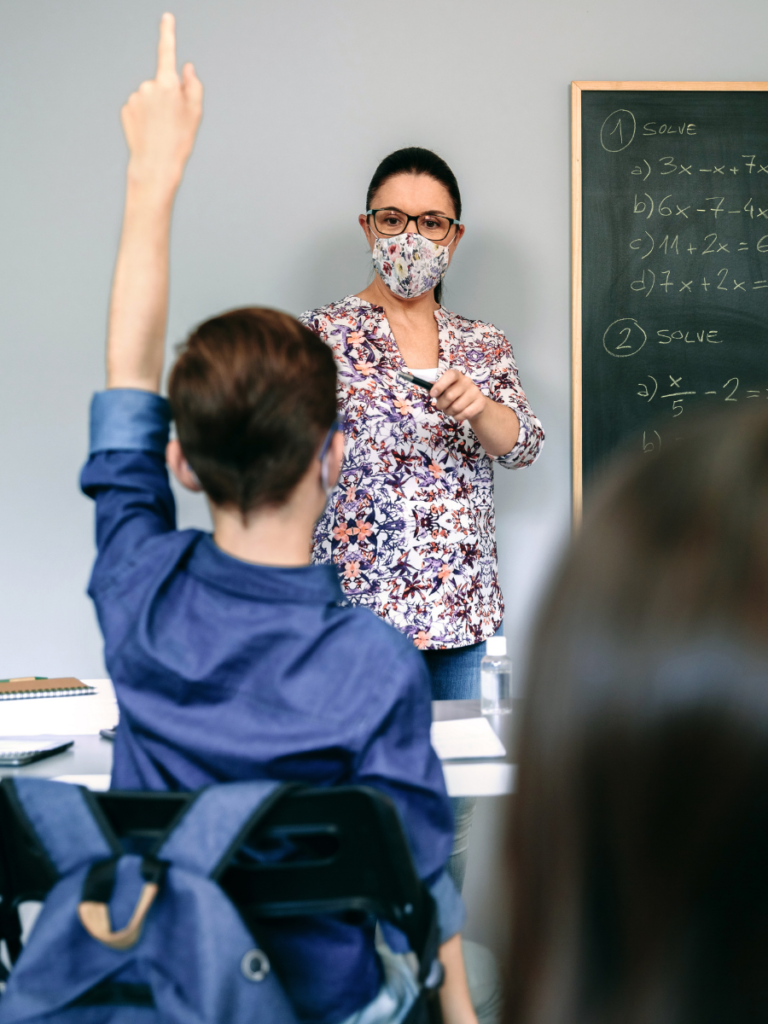Forget Learning Loss; Let’s Talk Gains

Written by Cheryl Adams
Professional Development Specialist
Five Star Technology Solutions
Let’s stop dismissing what has happened in the past year and a half (and is still happening). COVID has affected us all whether we realize it or not. We cannot assume that everyone will be able to jump back into school and continue learning like nothing happened. Instead, what if we focused on what we have learned during the pandemic and used that to create more authentic learning opportunities for students?
As we kick off the school year, we should focus on our students’ social and emotional needs first and foremost. Establishing routines and helping them feel safe will allow them to feel comfortable with sharing their ideas! It’s so important now that we put their feelings first before expecting them to ace our yearly standardized tests.
So what can we do to help students excel in the classroom?

1. Establish class norms and expectations.
It’s important for all learners to feel safe and part of your classroom community. By creating these together, your students will know and understand what is expected in the classroom. Make time for daily or weekly check-ins with students. Give them the opportunity to share with you how their day or week is going by sending out a form or using sticky notes like this to let you know how things are going. Not only will this allow students to feel seen and heard, it will also give educators the information they need to meet students where they are and guide instruction.
2. Offer opportunities for students to learn in ways that support their individual learning styles.
Every student has experienced this situation differently, and we should encourage them to use these experiences to fuel their learning. What did they enjoy while they were learning in unique ways? How can we as educators take these experiences to teach our students differently so they are able to thrive not just in our classrooms, but when they leave school as well?
Consider options like flipped learning, station rotations (yes, even secondary students can participate in stations!), and project based learning. By allowing students to experience different activities, we are allowing them to take ownership of their process and leverage the learning modalities most beneficial to them. Additionally, this also provides more opportunities for educators to support each student individually.
3. Daily assessments.
I know, I know. We should always be assessing students, but unfortunately many of us get caught up in the sheer number of standards that have to be addressed and forget those important check-ins with students to ensure that they are actually understanding the concepts we are throwing out to them. By checking in more often, we can actually see where our students are and meet them there. These quick formative assessments can be short forms sent out at the end of the day with a few questions, sticky notes with their biggest takeaway, or even something that students created during the day that allows educators to see their understanding. These daily assessments will allow educators to pull data from students and guide instruction.
As you kick off the school year, remember you have the ability to set the tone for what’s ahead in your classroom. It’s time to stop focusing on “learning loss” and start focusing on what we’ve gained during the pandemic. Take a look at the tools and strategies that worked for you and your students during e-learning and continue using those this school year. Ask your students for their input as you kick off the year so they can actively participate in their learning process. And if those tools and strategies aren’t working as well as you had hoped, it’s okay to take a step back and restructure your plans. Learning is messy, so show your students you aren’t afraid to roll up your sleeves and dive in. You might be surprised by how many are ready to join you for an adventure.

